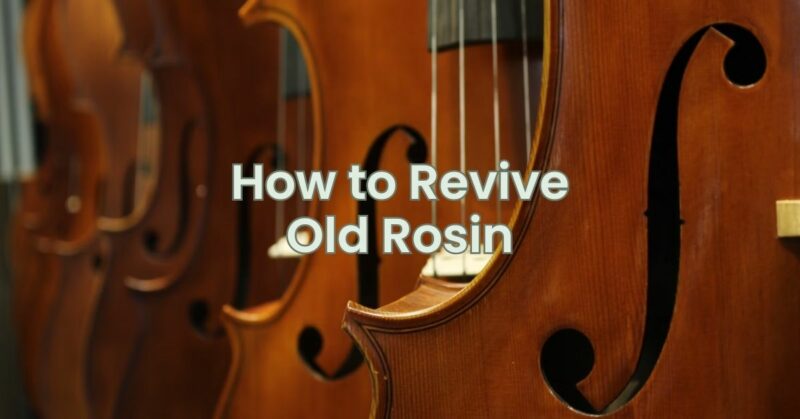Rosin, an integral component for string instrument players, provides essential friction between the bow hair and strings, enabling clear and resonant tones. Over time, rosin can become hard, dried out, or accumulated with debris, affecting its ability to produce optimal sound projection. In this article, we will explore techniques to revive old rosin, breathing new life into it and restoring its performance for your string instrument.
- Assessing the Condition of Old Rosin: Before attempting to revive old rosin, assess its condition to determine the appropriate method for revival. If the rosin is hardened but still retains its shape, it may respond well to softening techniques. However, if the rosin is excessively brittle or contains debris, it may be necessary to consider alternative approaches.
- Softening Hardened Rosin: One method to revive old rosin involves softening it to restore its functionality. Follow these steps:
- Place the old rosin in a clean, dry cloth or wrap it in parchment paper.
- Apply gentle pressure with your fingers or use a mallet to break the rosin into smaller pieces, facilitating the softening process.
- Hold the rosin firmly, ensuring a secure grip.
- Rub the rosin against the cloth or parchment paper using circular or back-and-forth motions.
- Apply moderate pressure as you rub, generating friction and warmth.
- Continue rubbing for several minutes, periodically checking the consistency of the rosin.
- If necessary, repeat the process until the rosin softens to the desired consistency.
- Cleaning Debris from Rosin: If the old rosin has accumulated debris or dirt, cleaning it is essential to restore its performance. Follow these steps:
- Gently scrape the surface of the rosin using a clean knife or specialized rosin scraper to remove any visible debris or buildup.
- If the rosin has a significant amount of debris, you can lightly sand the surface with fine-grit sandpaper to remove stubborn particles. Be cautious not to sand too aggressively, as it may affect the integrity of the rosin.
- Combining Techniques: For old rosin that is both hardened and accumulated with debris, combining softening and cleaning techniques may be necessary. Follow the steps mentioned in sections 2 and 3 consecutively, using both techniques to gradually revive and restore the rosin’s performance.
- Storing Revived Rosin: After reviving the old rosin, it’s crucial to store it properly to maintain its condition and prevent it from drying out again. Store the revived rosin in a sealed container or rosin box, away from extreme temperature fluctuations, excessive heat, or direct sunlight.
Note: Reviving old rosin can help restore its performance to some extent, but keep in mind that rosin has a limited lifespan. If the rosin is extremely old, damaged, or no longer responsive, it may be best to consider purchasing a new, high-quality rosin.
Conclusion: Reviving old rosin is a valuable technique to restore its functionality and optimize its performance on your string instrument. By softening hardened rosin and cleaning debris or dirt, you can breathe new life into it and achieve enhanced sound projection.
Remember to assess the condition of the old rosin and adjust the revival method accordingly. Proper storage of the revived rosin is crucial to maintain its condition and prevent further deterioration.
With properly revived rosin, you can regain control, clarity, and resonance in your bowing, allowing your instrument to sing with renewed vibrancy. Enjoy the revived playing experience as you bring forth the full potential of your instrument with the restored rosin.


